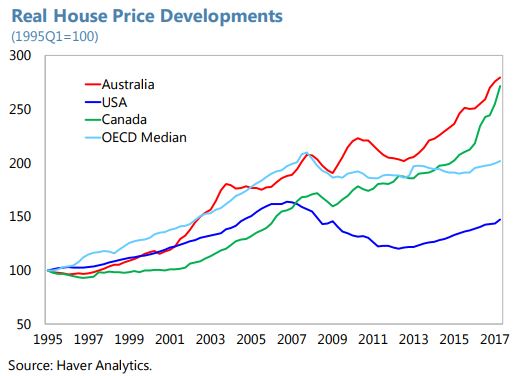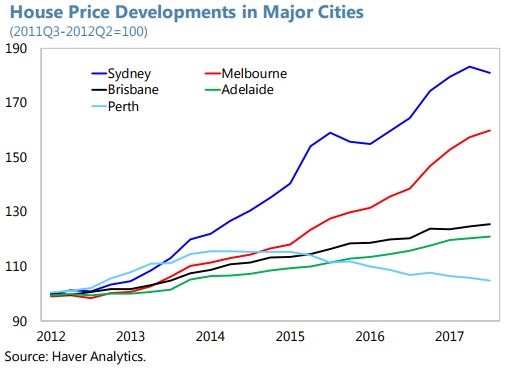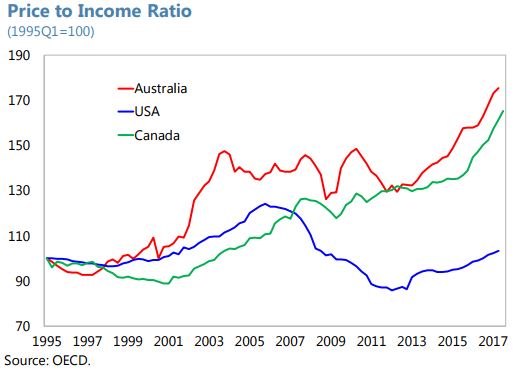Wednesday, February 21, 2018
Housing Market Imbalances in Australia: Development, Prospects, and Policies
From the IMF’s latest report on Australia:
“After a housing boom over the past 6 years, Australia’s housing market imbalances and the macro-financial impact of their possible resolution have become a concern. House prices in the country’s eight capital cities have increased by 50 percent since early 2012, raising the value of Australian residential property from around 4 to over 5 times gross household disposable income and household debt to around twice the level of that income.
The housing boom has primarily been a regional boom, driven by demand shifts, and amplified by legacy imbalances and a slow supply response. Developments in Sydney and Melbourne have driven national house prices, reflecting shifts in the strength of regional economic activity and population growth since the end of the mining investment boom.
While housing markets may stabilize soon, housing affordability issues will likely remain a concern given prospects for further population growth in the eastern capitals. With such growth, the capitals need to prepare for affordable housing supply in the future, as both short-and long-term price elasticities of supply are low. In the long-term, urbanization, labor mobility, and productivity can be closely linked.
Housing-related policies have begun to address related imbalances and could usefully be complemented by tax reform. Reducing the imbalances requires a multi-pronged approach amid strong demand fundamentals. The combination of more infrastructure investment and recent zoning and planning regulatory reform should contribute to increase the supply of developable land and enable its more efficient use. Prudential policies have increased the resilience of household balance sheets and the banking sector to housing and other shocks. But household debt remains high, and continued prudential policies are important to manage the risks to domestic financial stability. Housing tax reform would support the effectiveness of the overall policy response.”
Posted by at 1:32 PM
Labels: Global Housing Watch
Subscribe to: Posts


